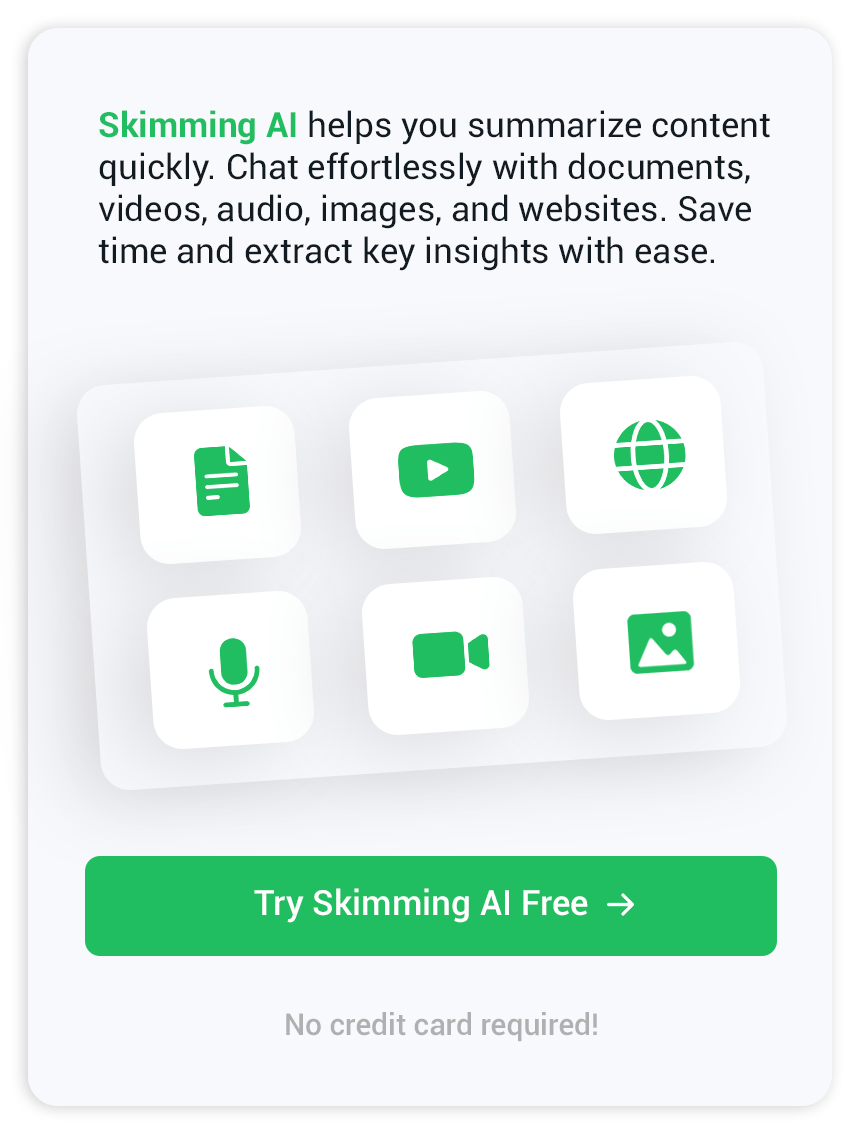Podcast Summarizer Tools: Save Hours and Capture Every Episode Fast
Every year, the number of shows on Spotify, Apple Podcasts, and Pocket Casts climbs past the three-million mark. Even the most dedicated listeners cannot keep pace, while creators struggle to turn each recording into social posts, newsletters, and searchable text. A podcast summarizer closes that gap by turning spoken audio into clear notes, highlights, and chapters within minutes.
Why listeners and creators need a podcast summarizer
An hour-long interview can hide a dozen practical insights—traditional note-taking forces you to replay timestamps, pause, and rewind. An AI podcast summarizer handles that labor in the background, then provides you with clean bullet points or narrative paragraphs that you can scan in seconds. Listeners catch more shows, students harvest references more easily, and marketers spot quotable quotes without having to scrub through entire tracks.
How AI turns audio into concise insights
The process runs in three simple stages.
Accurate transcription and speech recognition
Modern models convert speech to text with punctuation and speaker labels. Precise transcription lays the groundwork for dependable summaries.
Abstractive versus extractive summaries
An extractive engine lifts key sentences straight from the transcript, while an abstractive engine rewrites ideas in fresh wording. Many platforms blend both styles to strike a balance between speed and context.
Chapter markers and timestamps
Chapter headings and clickable timestamps allow you to jump from the summary back to the moment a guest shares a story or statistic, keeping the whole episode just a tap away.
Key features to watch for in a podcast summarizer
- Language coverage – a broad model handles accents and multilingual shows.
- Custom length settings – choose a one-sentence digest or a multi-paragraph breakdown.
- Sentiment or topic tags – find moments about funding rounds, mental health, or sports without hunting manually.
- Export formats – markdown for blogs, plain text for newsletters, or Word/Google Docs for editing.
- Privacy controls – creators often work with embargoed interviews, so a secure pipeline matters.
Top podcast summarizer tools at a glance
Below, you will find a mix of long-standing services and new entrants, each with its unique angle.
Snipcast
Paste any public episode link, and Snipcast emails a structured takeaway in minutes. It supports over 50 languages and keeps every summary inside your inbox, making it handy for offline reading.
Podsqueeze
Podsqueeze focuses on repurposing. One upload generates a podcast summary, social captions, and show-note paragraphs ready for CMS pasting.
ScreenApp
ScreenApp leans toward corporate users. It adds search across recordings, meeting notes, and video assets, turning a library into an internal knowledge base.
NoteGPT
NoteGPT is part of a broader note-taking suite. Once the AI podcast summarizer finishes, you can query the transcript with chat prompts and drop highlights into study decks.
iWeaver AI
Ideal for visual learners, iWeaver converts summaries into colorful mind maps that reveal argument paths and topic clusters at a glance.
Skimming AI
When rapid turnaround matters, Skimming AI podcast summarizer responds with concise notes, chapter lists, and share-ready quotes, the free tier lets you test drive an episode before committing.
Best practices for integrating podcast summaries into your workflow
For busy professionals
Summarize the queue during your commute, then skim the notes before your first meeting. Links to chapter timestamps help you replay only the segments that match your agenda.
For students and researchers
Pair a podcast summary generator with citation management software. Copy machine-readable quotes into Zotero or EndNote, and you will save hours during literature reviews.
For content repurposing
Creators can lift key lines into newsletters, audiograms, or carousel posts—summaries also power SEO pages that attract search traffic without posting full transcripts.
How to choose the right podcast summarizer for your needs
- Volume of episodes – occasional listeners may thrive on free plans, while daily shows need batch processing and API access.
- Format flexibility – if you publish on multiple platforms, pick a service that exports markdown, SRT, and DOCX in one click.
- Depth of insight – some tools give bullet lists, others add sentiment graphs or topic heat maps. Match depth to your decision-making style.
- Budget and support – enterprise plans often include dedicated onboarding and priority queues. Hobbyists can rely on generous freemium limits.
Future trends in AI-powered podcast summaries
- Real-time summarization will be available during live streams, providing watchers with instant recaps of the last five minutes.
- Voice-query features will let smart-speaker users ask, “What did the guest say about pricing strategy?” and hear a crisp answer.
- Cross-modal insights will merge podcast and video transcripts, providing product managers with a single dashboard of show mentions, webinar takeaways, and community call notes.
- Writer Assist will automatically draft blog posts or newsletters from the summary, trimming creative turnaround from hours to seconds.
Final thoughts and next steps for your listening routine
The right podcast summarizer transforms backlogged playlists into actionable knowledge you can apply today. Test one or two services with an episode you know well, compare the takeaways, and see which style matches your workflow. Once you find a good fit, let the tool run in the background while you focus on the part that matters, applying the ideas you just uncovered.


